When I saw for the first time Sottiletta, Umberto Cavenago's sculpture, I didn't know from what point of view to look at it.
On the one hand I saw it as a surface and a wall, on the other as a definite profile and crack.
I thought of his sculpture as a drawing in space, a form in surplace. Indeed, it appears as a thin snout on two wheels, an oxymoron figure prefiguring stasis in motion. Its presence is also very light, minimal and cold. Movement, which is possible and practicable, is related to a moment... even if you don't perceive which moment.
Luca Scarabelli
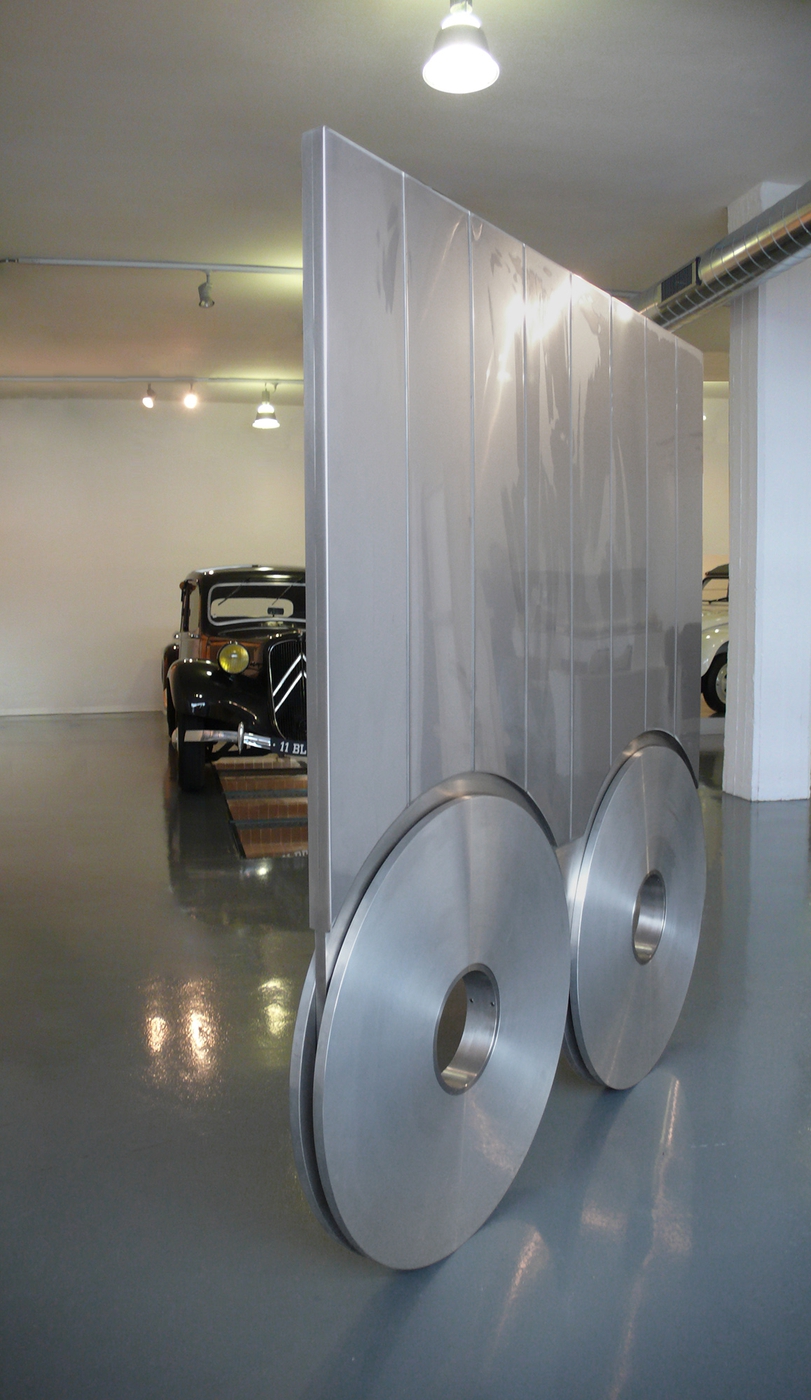
A wheel going up and down from the stool, Museum Flaminio Bertoni, Varese
Photo © Umberto CavenagoWhen I saw for the first time Sottiletta, Umberto Cavenago's sculpture, I didn't know from what point of view to look at it.
On the one hand I saw it as a surface and a wall, on the other as a definite profile and crack.
I thought of his sculpture as a drawing in space, a form in surplace. Indeed, it appears as a thin snout on two wheels, an oxymoron figure prefiguring stasis in motion. Its presence is also very light, minimal and cold. Movement, which is possible and practicable, is related to a moment... even if you don't perceive which moment.
Luca Scarabelli
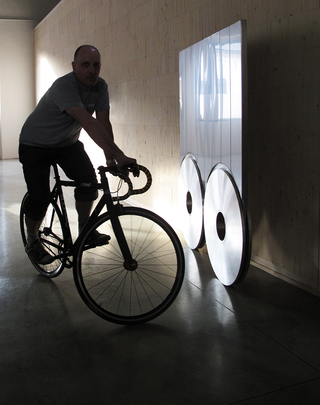
With Luca Scarabelli in surplace
Photo © Umberto Cavenago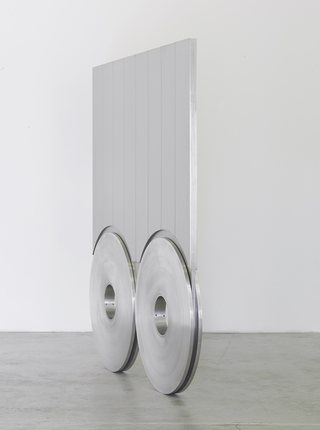
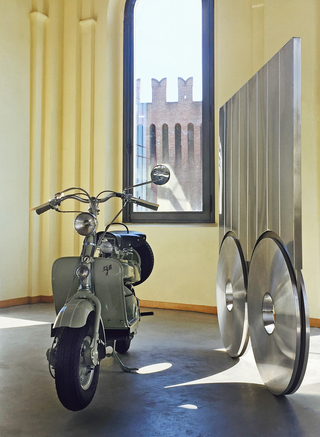
Installatio on the occasion of "Translazioni", 2016 Ex Opificio Industriale La Filanda, Soncino
Photo © Umberto Cavenago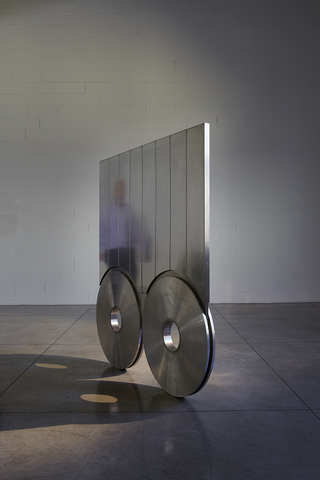
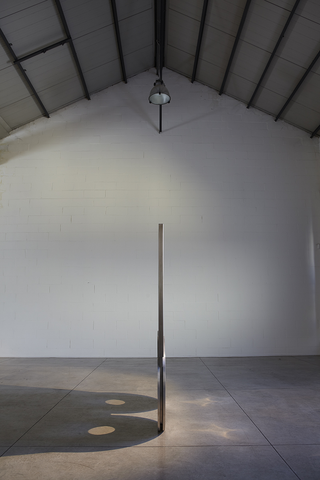
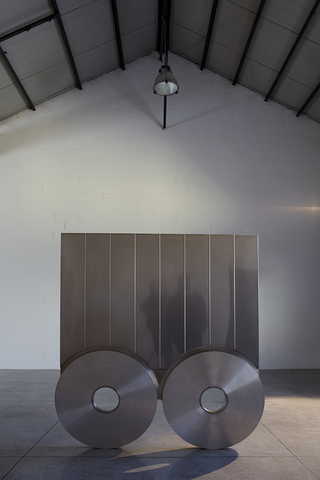
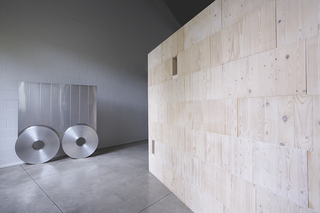
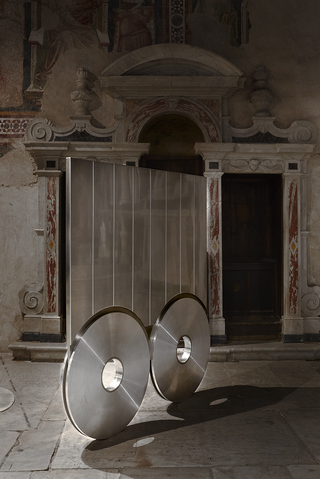
Installation on the occasion of "Erratico", 2019 Church of Sant'Agostino, Pietrasanta
Photo © Bart Herreman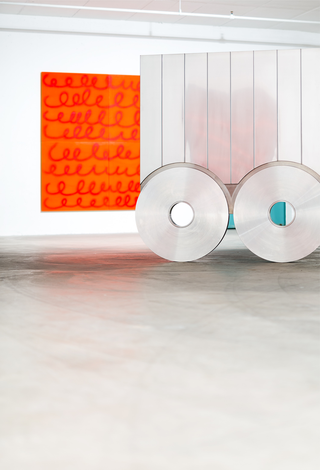
With Arthur Kostner at Kunsthalle West of Lana (BZ)
Photo © Ulrich Egger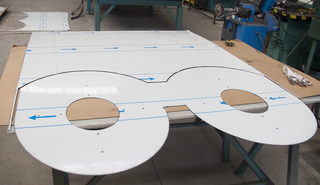
Detail of laminates under construction
Photo © Umberto Cavenago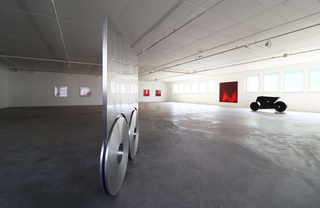
With Arthur Kostner at Kunsthalle West of Lana (BZ)
Photo © Umberto Cavenago
Social
Contatti
umberto@cavenago.info